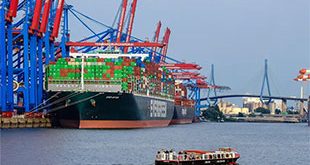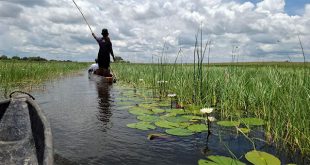
By Patrick Kagenda
The Uganda Road Fund was established by an Act to finance the routine and periodic maintenance of public roads, facilitate delivery of road maintenance services and other related matters. The Independent’s Patrick Kagenda caught up with Engineer Michael M. Odongo, the URF chief executive.
What is the background of the Uganda Road Fund?
There was a boom in road construction in sub- Sahara Africa after the Second World War up to when most of these countries got independence. The road building projects were build-and-leave. However the crisis came in maintenance and how to keep these roads. Most sub ‘”Saharan countries by 1990, could not sustainably maintain their road network. Sub- Saharan Africa has 2 million kms of roads requiring about $2 billion per year to maintain them. The bigger challenge was the economies of these countries could not sustain the roads. What was constructed five years ago was getting damaged in 10 years and was not being maintained. This is when the Road Fund came in after government said it should have an adequate, reliable and timely source of funding for road maintenance without looking for donors. This is how the second generation Road Fund was born and this is what we are trying to operate in this country.
What is a second generation Road Fund?
It has an independent source of income from road users, has an independent board comprised of mostly the private sector people and publishes its financial statements on a yearly basis explaining how the money was generated and used. Emphasis is put on value for money.
How many classes of roads do we have in Uganda?
We have four classes of roads in Uganda; national roads of 21,000 kms. They reached 21,000kms when Uganda National Roads Authority (UNRA) took over the additional 10,000kms from the districts last July. The national roads connecting major centres are now 21,000kms. The second class of roads is what we call District Urban Community Access (DUCA) roads. Under DUCA there are three classes of roads. District roads are the roads connecting to districts and before July last year they were 27,500kms in the whole country. UNRA inherited about 5,000 of these roads, part of the 10,000 I had earlier talked about. District roads are now 22,500kms. Then there are urban roads in the major big towns including Kampala. However the district roads are under the respective district authorities while the urban roads are under the respective urban authorities. The other class of roads is the community roads at community level which cover about 30,000kms.

What is your relationship with UNRA?
Our relationship with UNRA is a purchaser/ provider basis. We purchase road maintenance from UNRA. UNRA, the districts and the municipalities are all agents of the Road Fund. They all submit their road programmes to the Road Fund which evaluates them for financing.
How are you financed?
Under the Act, the purpose of the URF is to finance maintenance of all the roads I have talked about. These roads nationally average about 80,000kms. The URF has to finance the maintenance of all these roads. The beauty about it is that the financing is coming from you the road users. Under section 21 of the URF Act, there is what is called road user charges. These include fuel levies, international transit fees collected from foreign vehicles entering the country, road licences, axle load fines, bridge tolls and road tolls, and weight distance charges. This applies to the heavy vehicles operating internally. They have to be charged heavily because they are causing a lot of damage to the roads. The other source of our funding is under the Traffic and Road Safety Act which the traffic police are collecting as express penalties. We are not generating new levies but just consolidating the streams of revenue.
Do you have the capacity to monitor all the 80,000kms of roads you have talked about?
We have our own internal monitoring systems. We have key performance indicators which we monitor. But most importantly we engage the services of private sector companies especially consultants to help us monitor this performance. We can also engage the office of the Auditor General to monitor the use of public funds because the AG can do both financial and technical audit. We can also engage with the Ministry of Finance and the Ministry of Works because both have monitoring units. However the districts will have to put up district road committees headed by the district chairman and on them will sit MPs, District Engineers, the CAOs and other officials. This is the first level monitoring and no district would allow shoddy work to end up being blacklisted.
How will you address collusion when it comes to awarding road maintenance contracts?
Collusion might be there or it may not. By the set-up of the district roads committee there is little chance of collusion. But should the inevitable happen that they collude to cheat the Road Fund money, we shall take them to audit and the committee will have to identify who is responsible.
What would be the penalty if such a thing occurred?
We withhold funding to that district and what follows are people wanting an explanation to what has happened to their road funding.
When was the first Road Fund established and where?
The first Road Fund was established in 1866 in Jamaica. They were using the proceeds for construction and maintaining of roads. They were earmarking taxes and government would just allocate the road fund a fraction of the money collected. In Africa the first road fund was in 1923 in South Africa. The first generation road funds collapsed because governments at the time failed to sustain them.
 The Independent Uganda: You get the Truth we Pay the Price
The Independent Uganda: You get the Truth we Pay the Price





